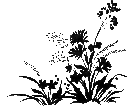 |
The Preserve |
News and Events |
Natural History |
The Trail |
Monitoring |
Restoration |
Library |
Organization |
|
Todmorden Mills Wildflower Preserve
|
Nature NotesYour nature guide for the week August 16-August 22WildflowersDuckweed, a tiny floating aquatic plant, is covering a good portion of the water surface of the pond and oxbow. Although Duckweed is an angiosperm (the group that includes flowering plants) it does not usually produce flowers this far north. Instead it reproduces by budding off pieces of new plant, which takes place approximately every three days. Not surprisingly, given this rapid reproductive rate, Duckweed can form very dense stands in calm water (some estimates are as high as 80,000 plants per square metre). BirdsMallard ducks love Duckweed, and their beaks are nicely adapted to strain it from the water. They take in beakfuls of water and duckweed, then expel the water through lamellae on the sides of the beak, trapping the duckweed like a sieve. At present, the pond and oxbow provide safe havens for Mallards which are undergoing their post-breeding moult. In this moult both males and females lose their wing feathers, and are flightless for about a month. However, as the first stage of this moult males also lose their brightly-coloured head feathers and some body feathers, and become a dull brown colour, looking rather like females. After the wing feathers have regrown, the birds undergo yet another moult (of body feathers) and males regain their bright breeding plumage in time for their winter courtship. InsectsWinged adult Carolina Grasshoppers are becoming conspicuous in the meadows. When flushed from the ground, the Carolina Grasshopper flies up with a sudden flash of its bright yellow and black hind wings. Then, just as quickly, it lands and closes its wings to conceal the bright colour and blend in with its surroundings. This "dash-and-freeze" behaviour confuses predators that fixate on the flash of colour, only to lose sight of the grasshopper after it lands. The appearance of winged adults has been delayed this summer by the cool spring and summer weather. Lower temperatures probably have slowed the growth and development of eggs and nymphs. The adult Monarchs that we see out in the meadows will be the last cohort to breed in Ontario this season. The adults that result from the current crop of eggs (and caterpillars) will be migratory butterflies that make the long flight to overwintering sites in central Mexico. These migratory adults will not become sexually mature while in Ontario: instead they will enter a state called "reproductive diapause". They spend the latter part of September feeding on nectar and building up fat reserves for their flight south. Next spring, on the trip north, the migrants will break diapause and breed; however, only their descendants will return to Ontario. Trees and ShrubsHawthorns are easily identifiable at present; their leaves are marked with an orange spot displaying a black centre -- telltale signs of infection by Cedar Hawthorn Rust. The rust doesn't usually have serious consequences for the tree, but infected leaves will often turn yellow and drop early. In order for the rust to persist, two hosts are required: hawthorns and evergreens. Look at the underside of an infected hawthorn leaf and you may see tubes dangling down. These contain spores which are released into the air during rain or on mornings with heavy dew. If spores land on an evergreen, such as a cedar or juniper, they may infect the new host. The cycle continues the following spring, when spores released from the evergreen host infect Hawthorn trees. Nature Notes is researched and written by Mike Dennison and Alejandro Lynch, and is published each week by Hopscotch Interactive (www.hopscotch.ca). In addition to this online version, Nature Notes is available as a print-friendly PDF and as a text-only email version. Please contact Mike Dennison to receive these, or for more info (tel: 416-696-7230, email: dennison@hopscotch.ca). |
| Copyright © 2003-2004 Todmorden Mills Wildflower Preserve |